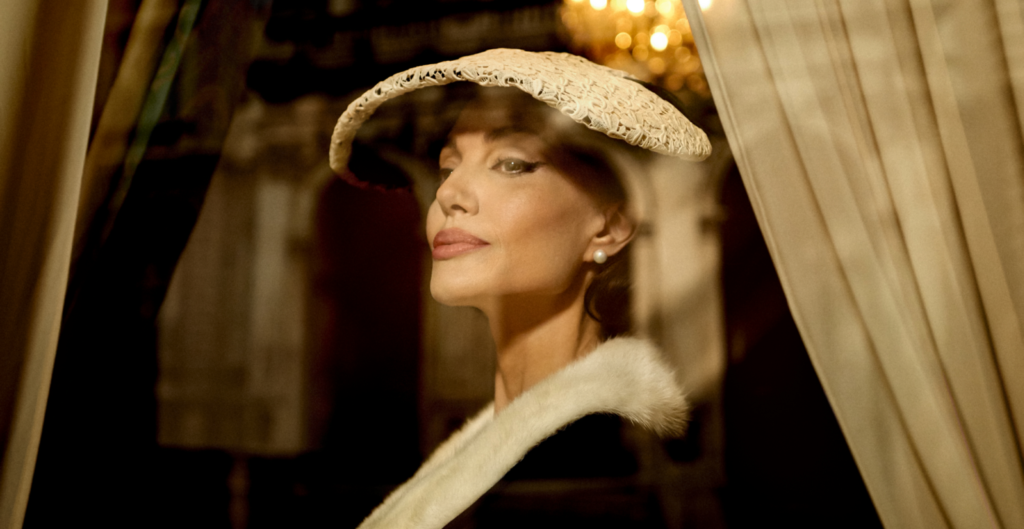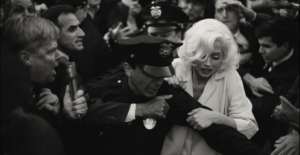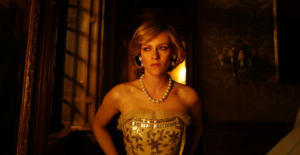Maria
Outstanding Cinematography – ASC
2024/2025

FR EN
Pablo Larraín signe un nouveau biopic pas comme les autres et conclut après « Jackie » et « Spencer » sa trilogie de portraits féminins en interrogeant toujours le mythe entourant ces femmes ayant bouleversé le XXe siècle dans cette volonté de sortir d’un destin tracé. Le réalisateur chilien du poétique « Neruda » et du métaphorique « El Conde », aborde ici une artiste torturée et mélancolique alors que La Callas se battait pour retrouver sa voix. La légendaire cantatrice grecque ne s’est en effet pas produite sur scène depuis plus de dix ans et vit alors recluse en 1977 dans son luxueux appartement parisien…
Fidèle au cadre de sa trilogie, Pablo Larraín circonscrit l’intrigue à un temps court en limitant le récit aux sept derniers jours de Maria Callas, aussi bien l’artiste que la femme. Le scénario de Steven Knight (Peaky Blinders) nous embarque ainsi dans un voyage vers la mort où la cantatrice offre un ultime entretien à un journaliste nommé Mandrax – qui n’est autre que le nom de son médicament – qui (littéralement) l’accompagne quotidiennement lors de ses déambulations parisiennes. Mais cette allégorie journalistique se révèle être aussi celle du réalisateur lui-même comme une sorte de mise en abîme sur la construction de son propre film. Si le point de vue reste introspectif (comme dans « Jackie » et « Spencer »), il navigue entre rêve, souvenirs et réalité tant La Callas peut être d’une lucidité tranchante ou fantasmer sous l’influence de son interviewer. Et dans cet univers de luxe mortifère, la Diva se souvient et raconte son passé, son enfance et son grand amour pour l’armateur grec Aristote Onassis (qui la quitta finalement pour épouser … Jackie Kennedy) mais pas sous la forme de flash-backs, plutôt comme des éclats de souvenirs d’une vie antérieure d’ores et déjà achevée. Angelina Jolie y incarne cette cantatrice aphone avec force dans la douleur et la tourmente aux côtés des deux grands acteurs italiens Pierfrancesco Favino & Alba Rohrwacher et du Français Vincent Macaigne.
La photographie d’Ed Lachman (succédant à Stéphane Fontaine et Claire Mathon sur « Jackie » et « Spencer ») est une nouvelle fois sublime et le cadre toujours aussi riche dans cette trilogie de figures féminines vivant dans le faste et l’ornement mais bien seules dans leur sphère, à l’image d’un des premiers plans du film marqué par la symétrie parfaite de son décor dans l’entrée d’une chambre luxuriante où le seul élément dissymétrique n’est autre que Maria Callas dormant sur un côté de son immense lit. Le spectacle et la grandeur de l’Opéra se retrouvent alors dans les somptueux décors et les costumes ainsi que dans la théâtralité assumée du film qui crée une certaine forme d’artificialité et donc plus de distance avec son sujet que dans les deux opus précédents. Mais c’est cohérent avec ce récit aux frontières poreuses entre réalité et rêverie qui met en scène l’Opéra dans l’imaginaire de son sujet comme avec ‘Le Chant des Gitans’ au Trocadéro ou le ‘Chœur à bouche fermée’ par des geishas en plein Paris. Le film juxtapose ainsi l’image de La Callas et l’intimité de Maria dans les mêmes scènes dès l’introduction avec ce concert chanté/remémoré dans la cuisine sur fond de beurre grésillant à la poêle. Le passé est ainsi figuré par le recours au noir et blanc ou par de fausses images d’archives quand le réel est lui fantasmé par de splendides couleurs et teintes automnales empreintes de nostalgie, et filmé avec diverses caméras d’époques sur du 35mm (pour le récit) et du 16mm (pour les souvenirs).
S’il frôle l’exercice de style avec « Maria », nous rappelant quelque peu le très beau « Blonde » d’Andrew Dominik sur Marilyn Monroe (que l’on croise d’ailleurs au détour d’une scène presque de filiation), Pablo Larraín conclut donc en beauté sa trilogie biographique féminine avec ce film esthétique aux magnifiques idées de mise en scène qui dépasse de loin les conventions du biopic.
Raphaël Sallenave
Pablo Larraín delivers another biopic like no other, wrapping up his trilogy of women’s portraits after “Jackie” and “Spencer” by continuing to question the myths surrounding these women who shook up the 20th century with their determination to break free from a predetermined destiny. The Chilean director of the poetic “Neruda” and the metaphorical “El Conde”, here tackles a tormented, melancholy artist as La Callas struggled to regain her voice. In 1977, the legendary Greek singer had not appeared on stage for over ten years, living in seclusion in her luxurious Parisian apartment…
In line with the setting of his trilogy, Pablo Larraín keeps the timeframe short, limiting the story to the last seven days of Maria Callas, both the artist and the woman. The screenplay by Steven Knight (Peaky Blinders) takes us on a journey towards death, in which the singer offers a final interview to a journalist named Mandrax – the name of her medication – who (literally) walks with her through her daily Parisian wanderings. But this journalistic allegory also turns out to be that of the director himself, as a kind of mise en abyme on the making of his own film. While the point of view remains introspective (as in “Jackie” and “Spencer”), it shifts back and forth between dreams, memories and reality, as La Callas can be either razor-sharply lucid or fantasizing under the influence of her interviewer. And in this world of mortifying opulence, the Diva remembers and recounts her past, her childhood and her great love for the Greek shipowner Aristotle Onassis (who eventually left her to marry … none other than Jackie Kennedy), but not as flashbacks, rather as bursts of memory from a past life already over. Angelina Jolie powerfully portrays this voiceless singer in pain and turmoil, alongside two great Italian actors, Pierfrancesco Favino & Alba Rohrwacher, and Frenchman Vincent Macaigne.
Ed Lachman’s cinematography (following in the footsteps of Stéphane Fontaine and Claire Mathon on “Jackie” and “Spencer”) is once again stunning, and the frame is as rich as ever in this trilogy of female figures living in pomp and ornament, but very much alone in their own world, as illustrated by one of the very first shots of the film, characterized by the perfect symmetry of its set in the entrance to a lavish bedroom, where the only asymmetrical feature is none other than Maria Callas sleeping on one side of her huge bed. The spectacle and grandeur of the opera are then conveyed in the magnificent sets and costumes, as well as in the film’s overt theatricality, which creates a certain form of artificiality and therefore more distance from its subject than in the two previous installments. But this is consistent with the story’s loose borders between reality and reverie, which stages the opera in its subject’s imagination, as with ‘Le Chant des Gitans’ at the Trocadero or the ‘Chœur à bouche fermée’ featuring geishas in the middle of Paris. The film thus juxtaposes the image of La Callas and the intimacy of Maria in the same scenes right from the opening, with the concert sung/remembered in the kitchen over a background of sizzling butter in the frying pan. The past is depicted in black-and-white or with fake archive footage, while the reality is fantasized in splendid colors and nostalgic autumnal hues, filmed with various vintage cameras on 35mm (for the story) and 16mm (for the memories).
Although “Maria” verges on the style exercise, somewhat reminiscent of Andrew Dominik’s beautiful “Blonde” about Marilyn Monroe (whom we meet in an almost kinship-like scene), Pablo Larraín concludes his female biography trilogy brilliantly with this visually gorgeous film full of great directorial vision that goes far beyond the conventional biopic.
Raphaël Sallenave


